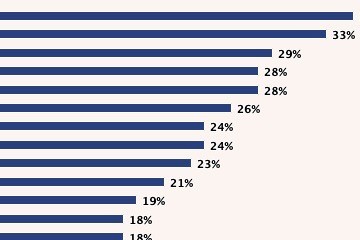The global coronavirus pandemic has significantly and, perhaps, irreversibly changed the way the retail industry solves complex business and communication problems, increasing dependence on digital technology.
Retail’s digital transformation, which is the concept of using new digital technology to address business performance, has been ongoing for decades. Ecommerce is arguably the most significant retail digital transformation ever.
Covid-19 has forced retailers to invest more money into new technologies and implement those technologies much more quickly than otherwise planned.
Ecommerce Expansion
Perhaps the best example of how Covid-19 has accelerated retail’s digital transformation is the number of brick-and-mortar stores that added ecommerce during the lockdown.
A survey of 200 retailers conducted by Software Advice, a reviews platform, found that 25 percent of surveyed businesses added an ecommerce sales channel due to the pandemic. The survey, while relatively small, makes the point that retailers that had not yet started to sell online quickly transformed their businesses.

Software Advice’s survey found that 50 out of 200 respondents launched ecommerce operations due to Covid-19.
Retailers that had not previously taken ecommerce seriously or devoted much budget to it were suddenly closed and needed a way to generate cash. What’s more, those same retailers saw reports about the huge growth in online ordering and wanted to take advantage.
It is worth remembering that ecommerce was already growing, pre-Covid.
“Prior to the pandemic, ecommerce sales already represented the bulk of overall retail sales growth in the United States. Some $600 billion in online sales accounted for 56 percent of overall retail growth in 2019,” wrote Agnes Teh Stubbs in the opening of the aforementioned Software Advice report.
The coronavirus accelerated ecommerce’s growth trends significantly.
“U.S. ecommerce penetration jumped to more than 25 percent in April 2020 from 15 percent at year-end 2019, pulling forward several years of adoption,” according to a June 2020 report from Prologis Research, which also estimated that ecommerce would reach a “penetration of nearly 20 percent for 2020 as a whole vs. a pre-pandemic forecast of 16.9 percent.”
Communications
“Over the last few months, we’ve seen years-long digital transformation roadmaps compressed into days and weeks to adapt to the new normal as a result of Covid-19. Our customers in nearly every industry have had to identify new ways to communicate with their customers and stakeholders — from patients to students, to shoppers, and even employees — essentially overnight,” said Glenn Weinstein, chief customer officer at Twilio, the text and communication platform.
Weinstein’s comments accompanied the release of a large digital transformation survey Twilio conducted in June 2020 that included responses from 2,569 decisionmakers at enterprise-level companies worldwide.
The survey found that, on average, Covid-19 had accelerated businesses’ plans to implement new communications systems and channels by about six years across all industries addressed and some 6.1 years specifically for the retail and ecommerce industries. With 95 percent of the responding businesses seeking new ways to communicate with and engage customers in light of the pandemic.
To address this need to communicate and engage, some 35 percent of the businesses Twilio surveyed added live chat, regardless of industry, and 33 percent added interactive voice response solutions.
All told, Twilio found that 70 percent of the retail and pure-play ecommerce businesses it surveyed in June had sped up their digital transformation in communications.
Furthermore, when asked about increasing the use of digital channels already in place as a result of Covid-19, retailers said they boosted live chat by 52 percent, email by half, video communications by 46 percent, and SMS (texting) by 49 percent.
Supply Chain
“The pandemic has exposed how vulnerable supply networks across the globe are. Many retailers have been affected because of their inability to predict and meet consumer demand for their products. Retailers will need more transparency of inventory to plan their online and offline customer experience,” wrote Vishnu Nallani Chekravarthula, head of innovation with Qentelli, a consulting firm, in a May 2020 article in Total Retail.
Supply chain problems during the pandemic will almost certainly lead to new solutions, which in turn, are going to require a digital transformation.
Small-and-mid-sized retailers may need to warehouse relatively more inventory of key products and position that inventory closer to customers. This might mean, for example, that a retail ecommerce SMB that had been shipping from a single warehouse needs to add several fulfillment centers around the country either by adding their own warehouses or partnering with third-parties.
As fulfillment becomes distributed, businesses will need new inventory and order management systems.
What’s Next
At the time of writing, some cities and states were rolling back their opening plans, adding mask orders, and still suffering from the pandemic. It is becoming more difficult to imagine a v-shaped recovery.
Once the coronavirus is a thing of the past, the investments retailers have made in accelerating their digital transformations will still pay off. The companies that become better at engaging and communicating with customers will likely benefit long-term.







